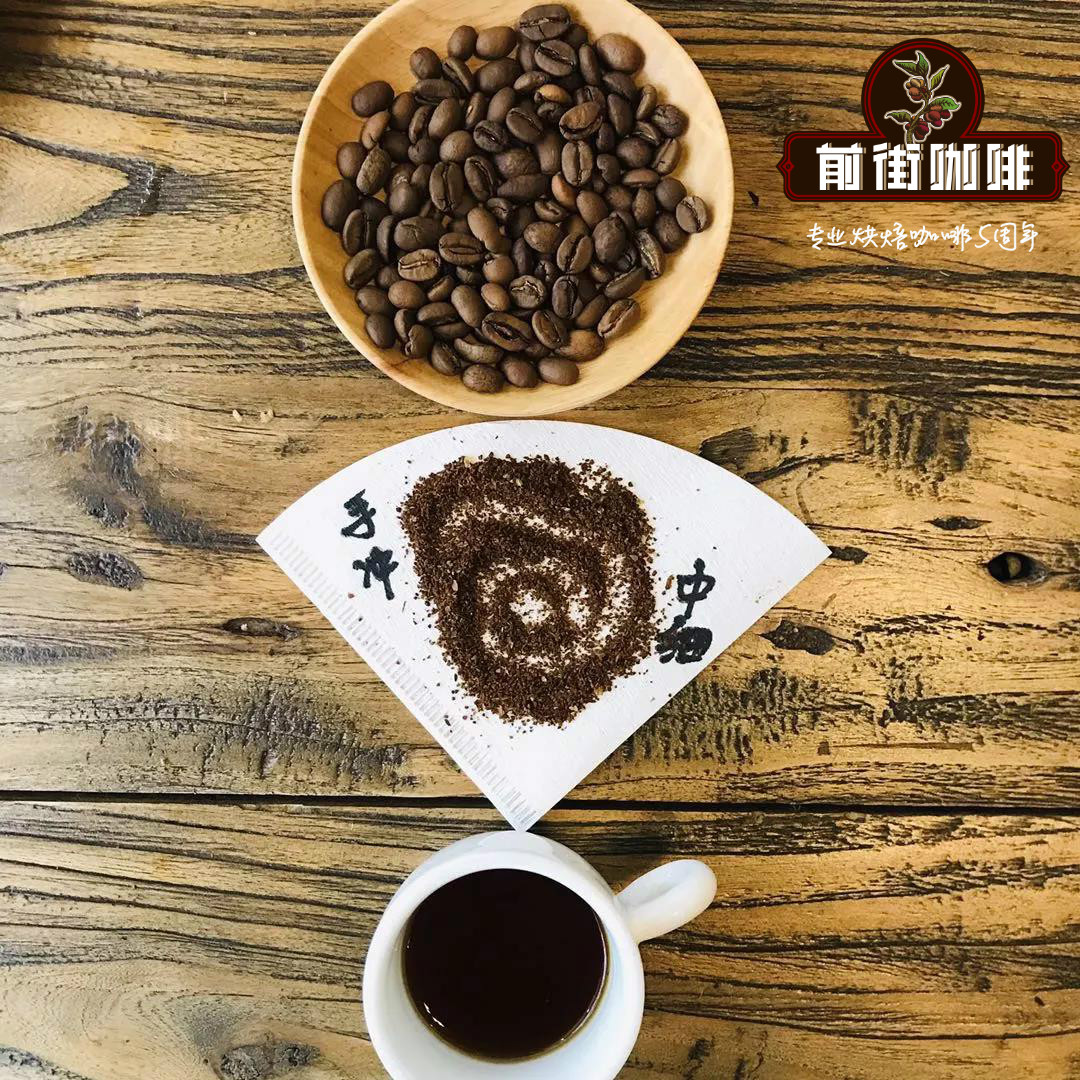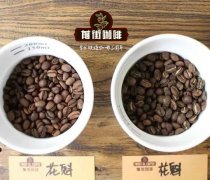Coffee beans are not sour varieties recommend which kind of coffee beans are not sour after cooking and how to cook them will not be sour

Professional coffee knowledge exchange more coffee bean information please follow the coffee workshop (Wechat official account cafe_style)
(1) the knack of preparing perfect coffee
◎ freshness (Freshness)
Fresh roasting is the life of a good cup of coffee! Freshly roasted coffee beans retain the most fragrant and charming coffee flavor, can easily make a cup of the most mellow coffee; stale coffee bean flavor has long been lost, can only boil a cup of bitter black water that is not mellow enough and may even be out of tune.
If you are interested, you can also learn how to bake coffee beans by yourself, which will be another kind of fun and have a chance to share it again.
Properly store coffee to ensure freshness to ensure freshness, keep the coffee in an airtight storage tank at room temperature for up to two weeks.
Use freshly ground coffee powder where feasible, try to grind coffee beans before each brewing coffee, coffee beans can maintain a longer period of freshness than coffee powder, because of its smaller surface area exposed to the air, it can slow down the rate of oxidation.
The flavor of fresh-boiled coffee can be easily lost and may be destroyed by long-term heating. If you can't finish the brew in time, please use a stainless steel thermos to preserve the rest of the coffee.
◎ degree of grinding (Grind)
In principle, the longer the water is in contact with the coffee in the brewing process, the thicker the grinding degree you must use. For example, it takes four minutes to brew coffee in a French filter kettle, and a very rough grind should be used, while an espresso machine takes only a few seconds to brew coffee, so very fine grinding should be used.
◎ ratio (Proportion)
Coffee beans must be used in sufficient portions. Too little coffee powder may lead to bitterness or insipidity, but not too much at a time. The dosage of coffee beans is the ratio of 10 grams of ground coffee powder to 180 milliliters of water.
Too much water or too little coffee powder can lead to excessive extraction of coffee, leading to unpleasant bitterness. If you think the coffee brewed in this ratio is too strong, add some hot water to the coffee to reconcile the concentration.
◎ water (Water)
More than 98% of the ingredients in a cup of coffee are "water". The importance of water is beyond doubt! If you use bad water to brew coffee, even the best beans will be in vain-because bad water can destroy the best coffee. Even a simple "filter kettle" can filter out many bad substances for "tap water", making the brewed coffee more fragrant, strong and mellow.
◎ temperature (Degree)
Generally speaking, the most suitable water temperature for brewing coffee is between 88 and 94 degrees Celsius. Avoid using boiling hot water to brew coffee. Let the water boil and let it sit for 1-2 minutes before making coffee.
◎ Coffee utensils (BREWING TOOLS)
Don't care what others say, as long as you use it easily, cook it easily, and drink happily, it is the most suitable way for you to make coffee. Some people like to brew coffee in convenient and fast American coffee pots, some prefer romantic and elegant Syphon pots that enjoy coffee, others like the simplicity and purity of French filter pots (French Press), the Italian style of Mocha, the flavor of Filter coffee, or the most popular Italian concentrate (Espresso) in the world. Anyway, the cooking method suitable for others may not be the best for you. Choosing your own most suitable and favorite coffee brewing method is the first condition to enjoy the fun of DIY coffee brewing.
(2) take your time to taste the perfect coffee
◎ aroma (Aroma)
The first feeling before tasting the coffee is the aroma. In fact, 90% of our feelings come from our sense of smell, which is why we feel so much about coffee.
◎ acidity (Acidity)
A refreshing and lively feeling in the mouth. In fact, there are two kinds of sour taste: delicious acid (ACIDITY) and uncomfortable acid (SOUR). In fact, you and I are no stranger to the delicious acid! Apples, oranges and other fruits are sour, as long as they are not spoiled, they are delicious sour (Sour unpleasant acidity after spoilage)!
The sour of good coffee is extremely elegant, delicious fruit acid (Fruit Acidity), for high-altitude growth of boutique coffee, with fruit-like comfortable sour taste, is normal!
◎ concentration (Body)
The weight or consistency of a drink or food on the tongue, from light to heavy represents the range of concentration. Just like squid soup and green vegetables and bean curd soup, although they are all soups, what is shown in front of them is the real taste and then it is light.
◎ flavor (Flavor)
The overall impression produced by a combination of aroma, acidity and concentration.
Two key points of tasting coffee: smell and taste! The nose is as important as the tongue.
Most people may think that tasting is just using the mouth, but in fact, the nose occupies a very important position in the process of tasting, and many feelings of taste are transmitted by the nose, so please make more use of the nose.
When a cup of coffee is just made, please don't rush it into your mouth, because when the temperature is so high, it's hard for your tongue to feel anything. But it is also because of the high temperature, so the aroma molecules are easy to distribute, and smelling the fragrance with your nose is the first step in tasting coffee. Coffee is currently known to contain the most chemicals (more than 500), many of which are still unknown. Under the interaction of many substances and the caramelization of roasting, the taste of coffee can be said to be ever-changing. There is a completely different smell in coffee from different producing areas, such as citrus, drupe, cream, honey, chocolate, jasmine, caramel and even mushrooms or musk. Wait, I can't stop talking about the smell! Don't be surprised that this is not the addition of spices afterwards, it is completely natural, but the charm of coffee, because it is so complex and changeable!
What is shared above is a small personal experience and a general direction. Of course, for each kind of coffee beans or conditioning utensils, have their own characteristics and advantages and disadvantages. But as long as you have the right conditioning tools and your favorite coffee beans, you will get a good cup of coffee from your heart.
Important Notice :
前街咖啡 FrontStreet Coffee has moved to new addredd:
FrontStreet Coffee Address: 315,Donghua East Road,GuangZhou
Tel:020 38364473
- Prev

Description of what coffee beans and main flavors are in Starbucks Althacia Manor
Professional coffee knowledge exchange more coffee bean information please follow the coffee workshop (Wechat official account cafe_style) Starbucks Alsatian Manor Coffee beans introduction: flavor description: balanced citrus flavor, medium mellow and refreshing acidity suitable food: citrus, cocoa, drupe acidity: medium mellow: medium treatment: washed planting area: Boaz volcano
- Next

Introduction to the types and bitterness of coffee beans recommended cooking methods for single coffee beans without acid
Professional coffee knowledge exchange more coffee bean information please follow the coffee workshop (Wechat official account cafe_style) Blue Mountain Coffee: producing country (Jamaica) Blue Mountain Coffee is located in the tropical island of the Caribbean-Jamaica, produced in Jamaica's Blue Mountains above 2500 feet above sea level, black and fertile soil, moderate temperature, abundant rainfall, appropriate sunshine
Related
- Beginners will see the "Coffee pull flower" guide!
- What is the difference between ice blog purified milk and ordinary milk coffee?
- Why is the Philippines the largest producer of crops in Liberia?
- For coffee extraction, should the fine powder be retained?
- How does extracted espresso fill pressed powder? How much strength does it take to press the powder?
- How to make jasmine cold extract coffee? Is the jasmine + latte good?
- Will this little toy really make the coffee taste better? How does Lily Drip affect coffee extraction?
- Will the action of slapping the filter cup also affect coffee extraction?
- What's the difference between powder-to-water ratio and powder-to-liquid ratio?
- What is the Ethiopian local species? What does it have to do with Heirloom native species?

